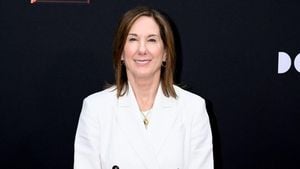The Japanese government has reached significant agreements on reforms to high school tuition subsidies, marking a historic shift toward more equitable access to education for families across the country. This development arises from negotiations among key political parties, including the ruling coalition of the Liberal Democratic Party (LDP), Komeito, and Nippon Ishin no Kai (Japan Innovation Party).
Prime Minister Ishiba Taro praised the collaborative efforts during discussions, stating, "Nationwide tuition-free high school education will be realized. I would like to show my gratitude for reaching this agreement," emphasizing the importance of these reforms for future generations.
Beginning April 2025, the government plans to lift income restrictions on the existing ¥118,800 tuition subsidy, allowing all high school students to benefit, regardless of their household income. This measure aims to alleviate the financial burdens faced by families and promote equal treatment for students attending public and private institutions. By 2026, the subsidy amount for private high school students will also be raised without any income limitations, reaching up to ¥457,000.
Currently, under the existing structure, families earning below ¥910,000 receive the lowest support, far below the actual tuition costs, which can lead to significant disparities among students based on their local municipality. For example, students commuting from nearby Chiba, where municipal support varies, see stark differences; some pay out-of-pocket costs nearing ¥500,000 to attend the same schools as their peers from Tokyo, who benefit from higher local subsidies. A student from Chiba remarked, "I believe it's not good to have differences based on the support amount just because of differences among municipalities."
Reactions from families have been largely positive. A mother of a private high school student expressed relief, noting, "It's a great help for us, allowing us to allocate funds to other areas like after-school tuition or help with living costs." Parents with younger children also highlighted how these reforms provide wider educational choices, potentially increasing the number of applications to private schools.
While the reforms have garnered support, they are not without controversy. The focus on lifting income restrictions has prompted concerns about the sustainability of funding and the possibility of unintended consequences, such as increased tuition rates at private institutions taking advantage of the new subsidy. Political reporter Nara Nozomi shared concerns, stating, "If we keep going like this, there are voices of breakdown. If the breakdown occurs, we must return to the already established ¥1.23 million.” This indicates the possible contention surrounding the adjustments to family income thresholds and their impact on overall fiscal health.
Overall, the agreement reflects Japan's commitment to educational equity. Actors like Wakaana Aoi, who is part of the 'news zero' team, noted, "It’s good to see increased options for progression, but we must monitor how the funds come from previous expenditures.” Such insights highlight the need to balance educational funding with fiscal responsibility.
The roadmap forward includes addressing remaining hurdles, such as negotiations with opposition parties on subsidizing even higher household incomes through the controversial "103-man yen wall" discussions, which will continue to spark debates around fiscal policy priorities. The broader question remains: how these changes will reshape the educational map of Japan and whether they will effectively address the inequalities faced by many families.
With these adjustments on the horizon, it seems Japan is poised to transition its educational system toward one reflecting capabilities for all, though the path will require careful navigation, as stakeholders look to balance access, quality, and funding sustainability for future generations.



